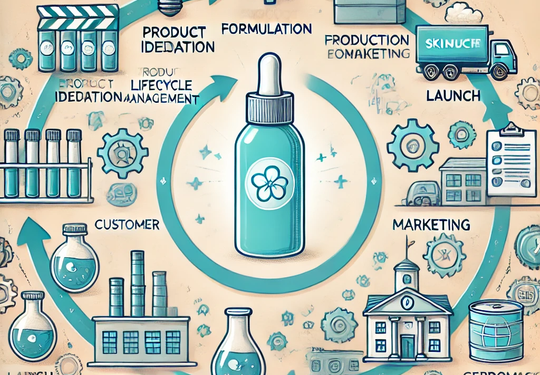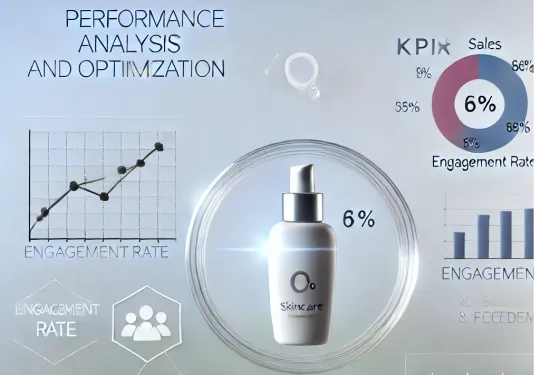What Is Skincare Product Management? A Comprehensive Guide
By:
bryan choong
On
19/11/2024Reading time:
0 min
Summary:
The skincare industry is dynamic, competitive, and constantly evolving. Behind every successful product is a meticulous process of development, launch, and ongoing management—this is where skincare product management comes in. Skincare product management involves overseeing the entire lifecycle of a skincare product, from ideation and formulation to marketing, distribution, and continuous improvement. It bridges the gap between business goals, consumer needs, and technical requirements, ensuring that a product not only meets expectations but also thrives in the market.
In this blog, we’ll explore what skincare product management entails, why it’s essential, and how it contributes to building successful skincare brands.
Defining Skincare Product Management
Skincare product management is the process of planning, developing, launching, and managing skincare products to meet consumer demands and business objectives. It requires a multidisciplinary approach that integrates:
Market Research: Understanding consumer needs, industry trends, and competitor strategies.
Product Development: Collaborating with chemists and formulators to create effective and marketable products.
Branding and Positioning: Aligning products with the brand's identity and unique selling proposition (USP).
Marketing Strategy: Creating campaigns to promote the product and engage target audiences.
Lifecycle Management: Continuously improving the product and adapting to changing market conditions.
Example: The development of a best-selling vitamin C serum involves identifying market demand for brightening products, formulating a stable vitamin C solution, choosing eco-friendly packaging, and launching it with a compelling marketing strategy.

skincare product marketing brief

establish skincare brand mission
1. Ideation and Concept Development
The process begins with identifying gaps in the market or opportunities based on consumer needs. Product managers collaborate with marketing teams, R&D, and stakeholders to define the product’s purpose, target audience, and USP.
Questions to Address:
What problem does this product solve?
Who is the target consumer?
How does this product stand out from competitors?
Example: A skincare brand may notice a growing demand for sustainable beauty and decide to create a waterless cleanser to reduce water consumption.
2. Formulation and Development
Product managers work closely with chemists and formulators to create products that deliver on their promises. This phase involves ingredient selection, testing for safety and efficacy, and ensuring compliance with regulatory standards.
Key Activities:
Collaborating with R&D to align the formula with the product concept.
Conducting stability and compatibility tests.
Ensuring the formula is safe and effective for the intended audience.
Example: For an anti-aging cream, a product manager may prioritize proven ingredients like retinol, peptides, and antioxidants while ensuring the formulation suits sensitive skin.

skincare formulation development in a laboratory

packaging design of a new skincare
3. Packaging Design and Production
Packaging plays a significant role in consumer perception and product performance. Product managers oversee packaging development to ensure it aligns with the brand’s identity and enhances the product's functionality.
Considerations:
Does the packaging protect the product (e.g., UV-protected bottles for vitamin C)?
Is the packaging eco-friendly and appealing to the target audience?
Does it reflect the product’s price point and brand positioning?
Example: A luxury skincare line may use frosted glass jars with gold accents to convey exclusivity, while a clean beauty brand might opt for recyclable or biodegradable materials.
4. Pricing and Positioning
Product managers determine pricing strategies based on production costs, competitor analysis, and the brand’s market positioning. They ensure the price aligns with consumer expectations and delivers value.
Questions to Address:
Is the product priced competitively for its category?
Does the price reflect the perceived quality and benefits?
Is the pricing sustainable for long-term profitability?
Example: A mid-tier skincare brand may price its products slightly higher than drugstore competitors to emphasize superior quality but lower than luxury brands to remain accessible.

pricing of a new skincare product

promotion for a new skincare product
5. Marketing and Launch
A successful product launch requires strategic marketing to generate excitement and demand. Product managers collaborate with marketing teams to create campaigns that highlight the product’s benefits and connect with the target audience.
Key Activities:
Creating product pages, promotional materials, and social media campaigns.
Partnering with influencers and industry experts to build credibility.
Offering promotions, such as pre-orders or limited-time discounts, to boost initial sales.
Example: For a new sunscreen, a brand might launch a campaign focusing on sun protection and skin health, featuring dermatologists and skincare influencers to build trust.
6. Lifecycle Management and Improvement
Once a product is launched, the work doesn’t stop. Product managers monitor consumer feedback, sales performance, and market trends to make continuous improvements.
Areas of Focus:
Gathering customer reviews and addressing complaints.
Updating formulations or packaging based on regulatory changes or new research.
Expanding the product line with complementary offerings.
Example: If customers report that a moisturizer is too heavy for oily skin, the product manager might introduce a lighter, gel-based version.

product lifecycle management

analyzing marketing performance
Why Skincare Product Management Matters
Effective skincare product management is critical for several reasons:
Aligning Products with Consumer Needs: Product managers ensure that every product solves a real problem for the target audience, increasing the likelihood of success.
Maintaining Brand Consistency: By aligning each product with the brand’s vision and identity, product management helps build trust and loyalty.
Adapting to Market Trends: The skincare industry evolves rapidly. Product managers keep brands relevant by staying informed about emerging trends and technologies.
Maximizing Profitability: By overseeing every aspect of the product lifecycle, product managers ensure efficient resource allocation and sustainable growth.
The Skills Required for Skincare Product Management
Product managers in the skincare industry need a diverse skill set, including:
Industry Knowledge: A deep understanding of skincare ingredients, trends, and consumer behavior.
Project Management: The ability to coordinate teams, meet deadlines, and manage budgets.
Communication: Strong interpersonal skills to collaborate with R&D, marketing, and sales teams.
Problem-Solving: The ability to address challenges like supply chain issues or formulation adjustments.

skincare product management
Subscribe form
This is where you want visitors to leave their email addresses so you can send them marketing info and targeted deals. To convince people to subscribe to your newsletter, try offering them something valuable that aligns with your business. This could be a special offer or early access to new products.